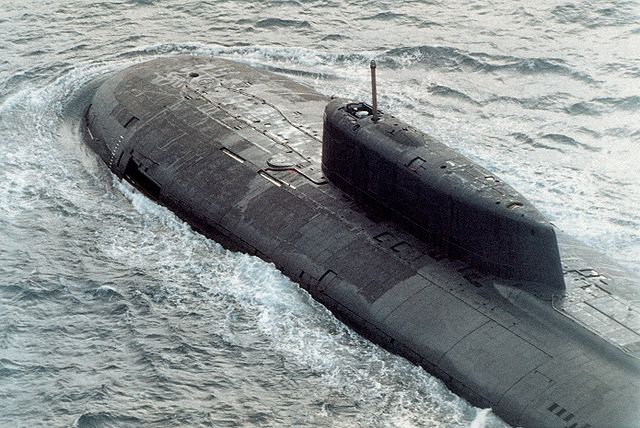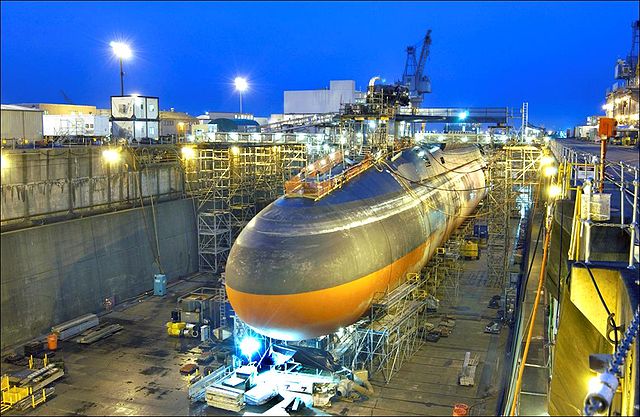A cruise missile submarine is a submarine that carries and launches cruise missiles as its primary armament. Missiles greatly enhance a warship's ability to attack surface combatants and strike land targets; although torpedoes are a more discrete option for submerged submarines, missiles give a much longer stand-off range, shorter time to impact the target, as well as the ability to engage multiple targets on different headings at the same time. Many cruise missile submarines retain the capability to deploy nuclear warheads on their missiles, but they are considered distinct from ballistic missile submarines due to the substantial differences between the two weapons systems' flight characteristics; cruise missiles fly aerodynamically using flight surfaces like wings or fins, while a ballistic missile uses its engine power alone as it may exit the atmosphere.

Soviet-made Oscar-class submarine of the Russian Navy. The doors for the P-700's inclined launch tubes are visible flanking the sail.
An official USN rendering of an Ohio-class submarine VLS system firing Tomahawk missiles.
USS Ohio undergoing conversion to a cruise missile submarine
USS Cusk fires a JB-2 Loon missile, 1951
Submarine-launched cruise missile
A submarine-launched cruise missile (SLCM) is a cruise missile that is launched from a submarine. Current versions are typically standoff weapons known as land-attack cruise missiles (LACMs), which are used to attack predetermined land targets with conventional or nuclear payloads. Anti-ship cruise missiles (ASCMs) are also used, and some submarine-launched cruise missiles have variants for both functions.
HMS Astute launching a Tomahawk in 2011
The fore section of USS Santa Fe (SSN-763), a Los Angeles-class submarine with the doors of the vertical launching system for Tomahawk missiles in the open position. The method of firing from VLS is in the minority.






